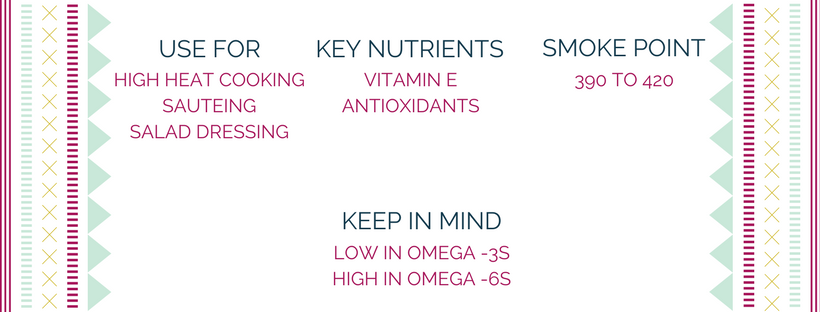Oil-icious + Complete Oil Guide
/Back in the day, there were basically two choices when it came to oils- vegetable oil and butter. Those days are long gone! Today there are tons of options lining the shelves- which can also get a little confusing. Use this quick guide to discern what to look for in an oil- and which to use when.
Avocado
Grapeseed
Coconut
Palm
WHAT IS A SMOKE POINT?
EACH OIL HAS A SMOKE POINT, THE TEMP. AT WHICH IT STOPS SHIMMERING AND STARTS TO SMOKE. AT THIS POINT, THE FAT STARTS TO BREAK DOWN, RELEASING A SUBSTANCE CALLED ACROLEIN THAT CAN GIVE FOOD AN ACRID TASTE. IT ALSO OXIDIZES, CREATING HARMFUL FREE RADICALS. LOWER SMOKE POINT OILS (UNDER 400) ARE BEST SUITED TO DRIZZLING, DRESSINGS AND LOWER-TEMP COOKING.
Sesame
Walnut
Sunflower
Flaxseed
CONSIDER PAYING THE EXTRA PRICE FOR OILS EXTRACTED AND PROCESSED WITHOUT CHEMICALS OR HEAT, BOTH OF WHICH CAN STRIP THEM OF FLAVOR AND NUTRITION AND OXIDIZE THEM, MAKING THEM HARMFUL TO OUR HEALTH. WORDS TO LOOK FOR ON THE LABEL INCLUDE VIRGIN OR EXTRA-VIRGIN, UNREFINED, ORGANIC, COLD-PRESSED AND EXPELLER-PRESSED.
Most cooking oils go through an insane amount of processing with chemical solvents, steamers, neutralizers, de-waxers, bleach, and deodorizers before they end up in the bottle. Try to buy organic if you can. GMOs and hexane extraction are prohibited in organic oil production, so you can avoid those simply by choosing organic oils.
Hope this guide helps you decide which oil to choose for what dish! What is your go-to oil in your kitchen?
xoxo Christina















